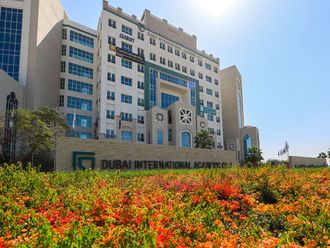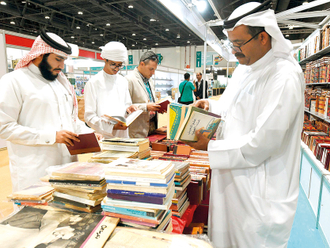
Abu Dhabi: A new battery storage system that can work at up to 20,000 discharge-recharge cycles without dissipating performance is being developed by Abu-Dhabi based researchers that could potentially create a new industry and push renewable energy forward.
Called the vanadium redox flow batteries (VRFB), its capacity is limited only by the size of the tanks used to store its electrolytes, say researchers.
The new battery is being developed by Masdar Institute of Science and Technology (MIST) with the Massachusetts Institute of Technology (MIT) in Boston to push innovative energy storage technology.
MIST an independent, research-driven graduate-level university focused on advanced energy and sustainable technologies.
Dr. Saif Almheiri, an assistant professor of mechanical and materials engineering at the Masdar Institute, is working with MIT on this unique electrochemical energy storage technology.
He said the innovative solution has the potential to be a key storage system for electrical power sourced from renewable and conventional energy.
“Coming up with ways to store renewable energy so it can be banked when plentiful and distributed when needed is one of the more exciting engineering challenges. There are a few solutions in the market today, but they tend to be expensive and cannot be used in all the operating environments that require renewable energy uptake. But the technology we’re working with has the potential to overcome these obstacles,” Dr. Almheiri explained.
Storage technology is seen as crucial for the renewable energy to double its share of the electricity sector by 2030. The Masdar-MIT battery aims could help the UAE store its renewable energy in a secure and dependable manner, he said.
Demand
Developing such a novel energy storage system could also provide the UAE with a valuable product for global energy storage market, which is forecasted to reach $113.5 billion by 2017.
With an effective and realistic energy storage technology, the UAE will be able to take advantage of its plentiful solar and wind energy, providing the country with clean power to take it into the next century.
He believes the needed breakthrough in electrochemical energy storage will be in Redox Flow Batteries (RFBs).
An RFB is a rechargeable battery built around two chemical components dissolved in liquids contained within different tanks in the system and the flow of the liquids is separated by a membrane, allowing the electrical energy to be stored in chemical energy, and then converted back into electrical energy when wanted.
Dr. Almheiri is now collaborating with MIT scientists to develop the novel non-water-based VRFB system that provides the higher conductivity, better solubility limits and stable electrodes that tomorrow’s reality demands.
Promising solution
“One of the most promising of all of the redox solutions is one based on the metal known as vanadium. Vanadium can exist in a solution in several different oxidation states, so it can effectively take the place of both of the necessary chemical solutions in the RFB – meaning it can be vanadium on each side of the cell. Using the same element avoids the risk of contamination across the membrane that can otherwise, over time, impair or damage a battery,” he explained.
Another advantage of the VRFB is that its capacity is limited only by the size of the tanks used to store its electrolytes.
An electrolyte is a substance that ionises when dissolved in suitable ionising solvents such as water. A substance that dissociates into ions in solution acquires the capacity to conduct electricity. On the other hand, ionisation is the process by which an atom or a molecule acquires a negative or positive charge by gaining or losing electrons to form ions, often in conjunction with other chemical changes.
Vanadium is a hard, naturally-occuring silvery grey and mallaeable metal present in 65 minerals (chemical symbol V and atomic number 23). It is easily able to handle the give-and-take of electrons that is crucial to a rechargeable battery, making it a very stable source element, said the researchjers.
A VRFB can be discharged and recharged 20,000 times, maintaining their near unchanging battery performance for decades.
This technology, however, is not yet fully optimised. Using a water-based solution to hold the electroactive vanadium imposes two limitations.
First, it requires the operating temperature range for RFBs to be limited to 0-100oC, so the water does not freeze or evaporate.
Second, the open circuit voltage is limited to only 1.2V to keep the water solution electrolytes electrochemically stable, which restricts the energy density of RFBs.
“To help VRFB, we are looking to discover new solvents to replace the water. This could allow the open circuit potential to exceed 1.2V, enhancing the energy density of the RFB,” Dr. Almheiri said.
Moving forward, Dr. Almheiri and his team will examine various supporting electrolytes and solvents and design advanced electrodes, which conduct electricity, with improved electrochemical reactions and stability.
They intend to build a working flow battery cell and will test the system’s stability and ability to cycle back and forth – charging, discharging and recharging.












